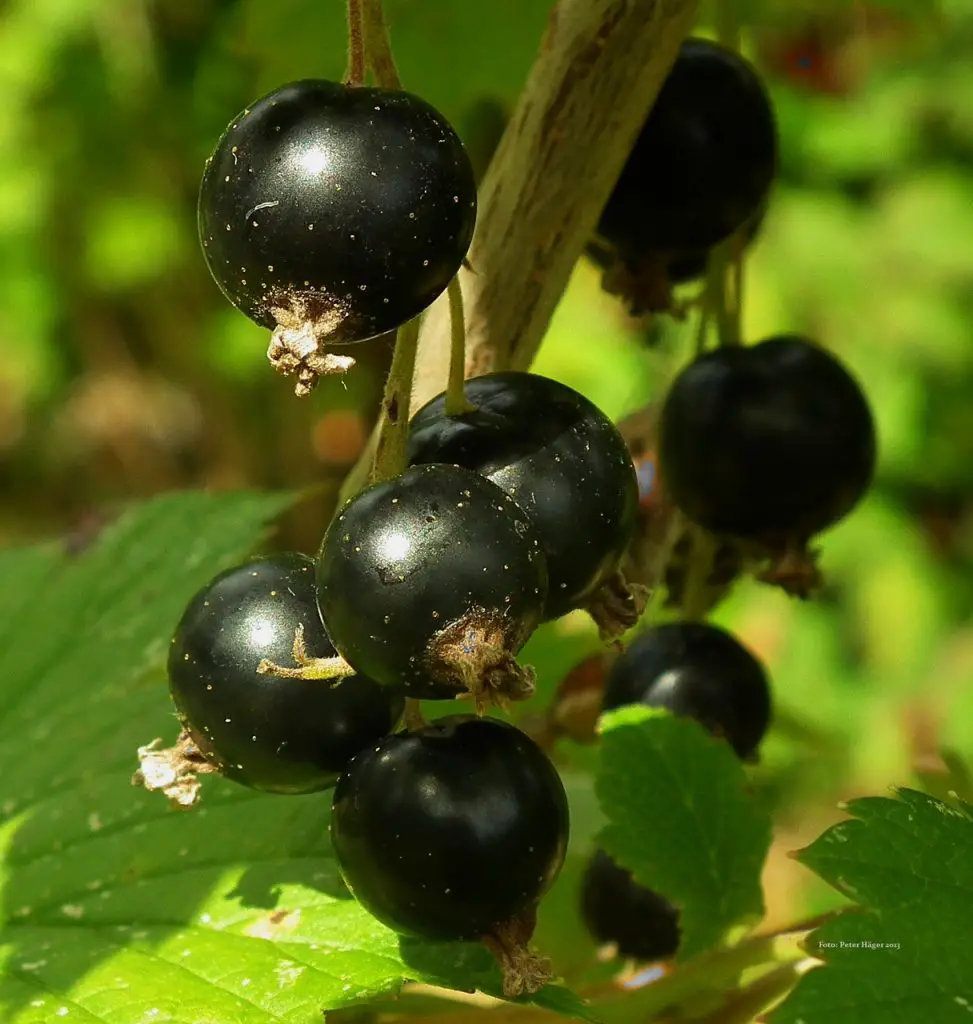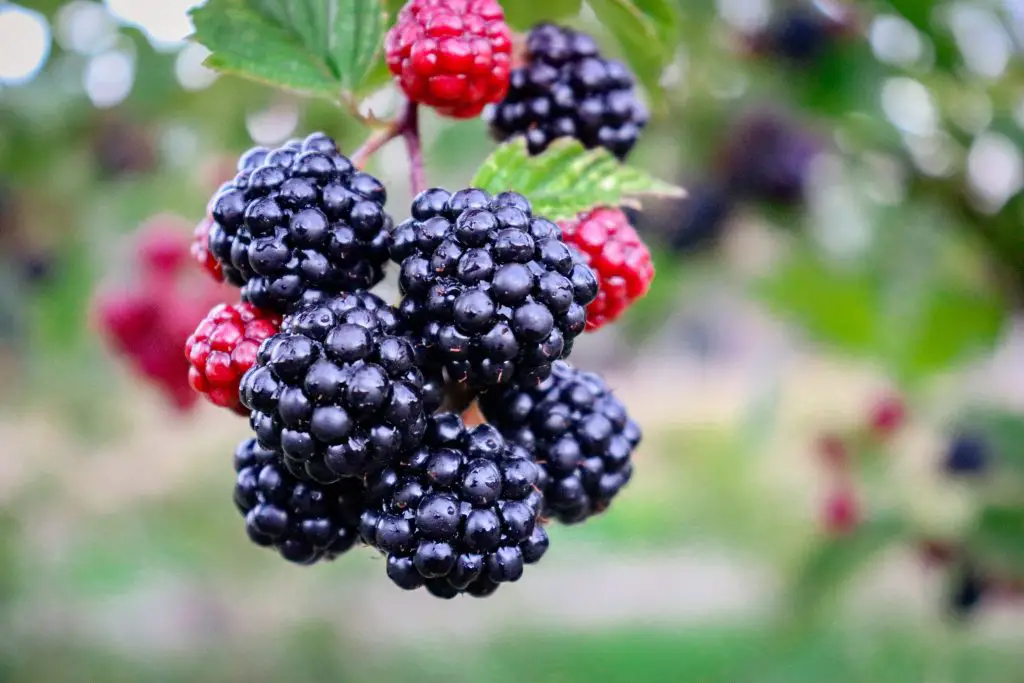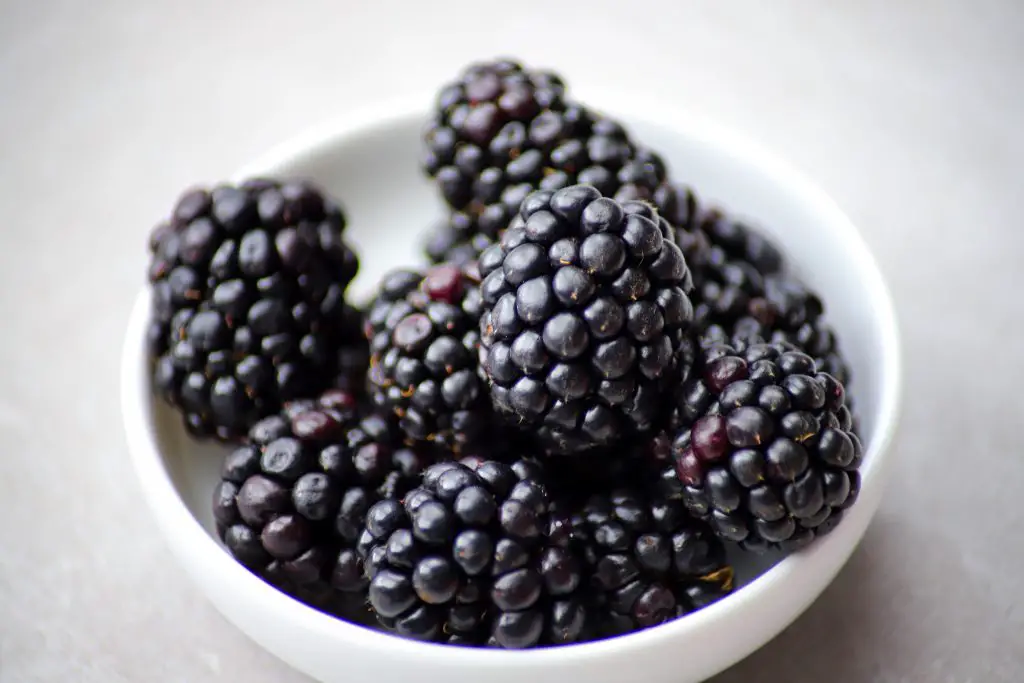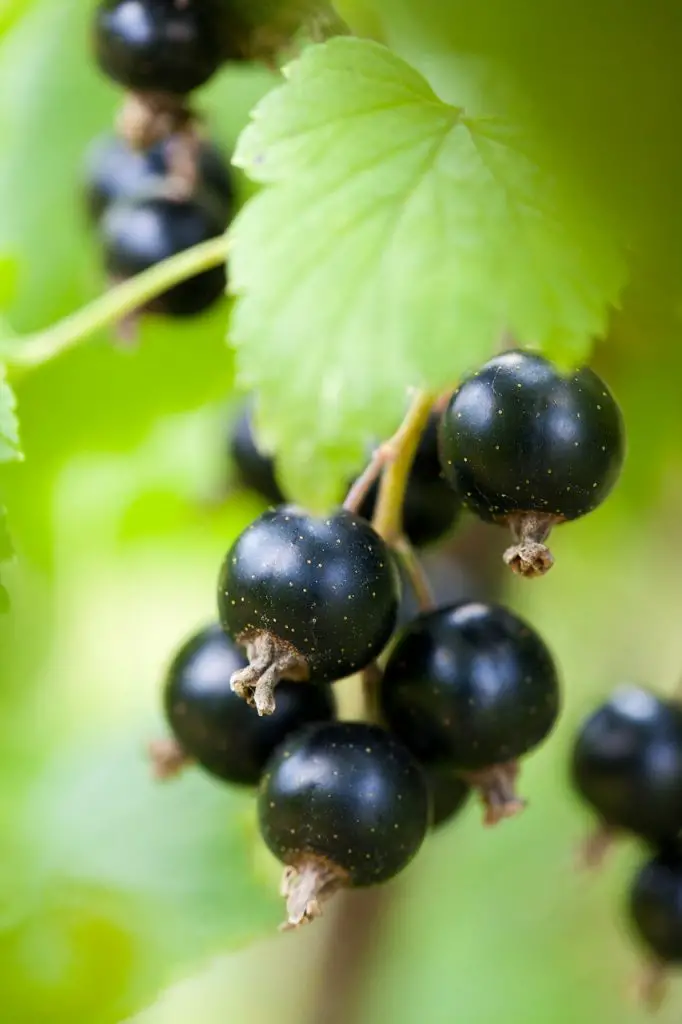Blackberries Vs Black Currants: What’s The Difference? Blackberries and blackcurrants are some of the most popular summer fruits that are eaten all over the world. Both are popular fruit in things like summer pudding as well as fresh on a pavlova or cheesecake. However, what is the difference between these fruits, and do they taste the same?
Blackcurrants and blackberries are quite different fruits that have a different flavor, shape, and size. Blackberries are approximately the size of a grape and are made up of individual segments that are significantly sweeter than blackcurrant which is around the size of a pea in most cases.
Blackcurrant is not widely sold as a commercial fruit in supermarkets because of its delicate nature which limits its shelf life. As a result of this blackcurrants tend to be used in cordials and drinks.
In addition to the differences in the fruit itself the plants that produce the fruits are distinctly different. Blackberries are produced on canes that appear each year, whereas currents are produced on a small deciduous shrub that is typically between 3 to 5 ft tall.

Which One Is Better For You Blackberries Or Blackcurrants?
In terms of nutrition, blackcurrants come out on top compared to blackberries for several reasons. Firstly blackcurrants have a much lower sugar level than blackberries and they also contain a significantly higher level of antioxidants when compared to blackberries.
Additionally, they have 6 times the level of vitamin C and twice the level of iron, however, blackberries do have a higher vitamin K and folate level which is particularly good for pregnant women.
So while both berries are quite healthy options blackcurrants overall are more nutritious. However, I personally would choose blackberries over currents because of the taste.
About Blackberries
Blackberry plants are native to Europe and the United States and have been an important crop for the indigenous peoples of both areas for thousands of years. The earliest evidence of the use of blackberry plants as a crop comes from a 2500-year-old Danish woman that was found in a Peat Bog in the Netherlands.
However, while this is a popular crop in many parts of the world it is also considered an invasive weed that can take over large areas. The fruit itself is used widely in desserts jams and jellies and is one of the most popular soft fruits available.

The fruit is grown on canes that are biannual which means that fruit is produced on the second year canes. When these plants are cultivated they require a support system to ensure that the long canes can be neatly tied up to allow fruit to be accessed easily.
The wild Blackberry plant is extremely thorny, however, in the late 1800s plant breeders began to hybridize the blackberries with raspberries producing arrange of varieties such as Loganberry. However, it was not until the 1920’s that the first thornless blackberries were developed which increase their popularity as plant for home gardeners.
How To Grow Blackberries
As mentioned above blackberries are essentially a weed which makes them extremely easy to grow in your garden. They are most commonly available as a bare-rooted plant in early spring and will quickly multiply.
They are an extremely hardy plant that can be grown from Zone 3 to Zone 10 in most cases however in colder regions it will be necessary to protect the crowns of the plants from the worst of the weather to ensure that they survive.
To plant a blackberry select an area that is sunny with moist rich but free-draining soil. If the soil is nutrient deficient it is advisable to dig in a bag of compost before you start growing the plant. The plant should be placed at a depth that is approximately equal to the depth that it was originally in the ground.
When placing the plant in the ground it is advisable to erect a support structure. The easiest thing to use for this purpose is temporary fencing panels or reo mesh as it is extremely easy to erect, long-lasting and it provides many different points for the plant to be tied to.

Once the plant is in position it is advisable to apply a thick layer of mulch to aid in the retention of water and suppress weeds. During its first season, it is advisable to water the plant regularly to ensure that it gets the water it needs. However, this is usually not necessarily after the first season unless the weather is particularly dry.
As the plant develops it will be necessary to tie the canes into the structure to ensure that they are supported. As the blackberry canes can get extremely long, up to 20 ft, it may be necessary to loop the canes up and down across the surface of the support structure.
In the first year that you have the plant, you will not get any fruit because the fruit is produced on second-year canes. At the end of the fruiting season, those canes that have just produced fruit should be removed from the plant leaving only this year’s growth.
However, as blackberries are relatively vigorous it may be necessary to remove some of the new growth if there are more than five or six games for a single plant.
Once the canes have been removed tie the remaining canes to the structure ensuring that they are spaced evenly across its surface to allow access for picking fruit later in the year.
Blackberries will typically produce a harvest in mid to late summer. However, you may need to net the canes to prevent birds from eating them. The precise time to harvest fruit can be difficult to tell because the fruit can appear quite black and plump but still be somewhat tart. The easiest way to tell is simply to try one and decide whether they are sweet enough for you to eat.
About Blackcurrents
Blackcurrants are native to Europe and Asia and have been known for centuries. However, the cultivation of these plants did not occur until the 17th century when their roots and bark began to be used in traditional medicine.
However, the use of blackcurrants as a food crop did not become popular in the UK until the second world war due to necessity. During this period fruit that was rich in vitamin C was difficult to come by due to the supply blockade imposed by the German U Boats. As other fruits such as oranges could not be grown domestically in the UK in large quantities blackcurrants became an invaluable source of vitamin C and the British government began to encourage the cultivation of these plants.
To ensure that the nation’s children receive sufficient vitamin C blackcurrant syrup began to be distributed from 1942 onwards in the country. The widespread use of these syrups resulted in the black currant fruit becoming a popular flavoring for things like cordial which gave rise to commercial products such as Ribena cordial.

In the US the popularity of the fruit was high in the 19th century however due to the threat that the currant plant posed to the logging industry due to its ability to transport rust to pine trees the growing of current plants was banned in several states which reduced it’s popularity significantly. It has only been since 2000 that this ban has been lifted in some jurisdictions and the plant is beginning to make a comeback.
The plant itself is an extremely hardy deciduous shrub that can grow in Zone 3 to 10. However, in warmer climates it will not fruit as well because it needs a period of chilling in order to produce fruit. It typically reaches a height of 3 to 5 ft depending upon the particular variety and the branches on the plant will grow vigorously in the first year and produce fruit in the second year.
However, while the plant is known to be a popular edible shrub it is also suitable for use in ornamental gardens because of its luscious green foliage, flowers, and fruit which typically is available in midsomer after a spring flowering.
The plants are widely available in most garden centers and can be purchased as potted plants through spring and summer but are most commonly sold as bare rooted plants in late winter or early spring.
How To Grow Blackcurrants
Blackcurrants are extremely easy plants to grow and they will produce a reasonable crop year on year. The plants are available year-round in most places however the best time to purchase them is in late winter or early spring as a bare-rooted plant because it is cheaper.
The other benefit of planting blackcurrants at this time of year is it provides an opportunity for the plant to become established before it has to survive another winter.
In terms of soil conditions, the plant prefers rich moist soils that are well-drained but it will also tolerate heavier soils provided that they are not water-logged for extended periods of time. Black blackcurrant should ideally be planted in a location that gets full sun as this will maximize fruit and flower production. However, if fruit production is not your priority the plant will tolerate partial shade quite happily. It is also advisable to avoid areas where the plant will be exposed to cold winds.
To plant the blackcurrant start by digging a hole that is approximately 1 ft deep and 1 ft wide. Add a bag of compost to the surrounding soil and dig it in well to ensure that the plant has plenty of nutrients. Once the soil is prepared place the plant in the hole and position it at a height that is approximately equal to the level it was originally at. Backfill the planting hole and firm the plant into the ground.
Mulch the surrounding area and water the plant in well. During the first season when the root system of the blackcurrant is still being established it is important to ensure that the soil remains moist and the plant does not dry out.
Pruning of the plant is generally best done in the winter months of the year. At this stage the branches of the plant that produced fruit in the prior year should be removed along with any branches that are disease, damaged, or crossing to ensure that the plant maintains an open structure to allow airflow.
At this stage, it is also a good time to apply a slow-release fertilizer to the plant and replace the mulch so that it is ready to go for the next growing season. If you follow these simple directions you will produce a reliable crop every year.
I hope you found this blog useful. If you have any questions or comments please leave them in the section below.
Relevant Articles
Blueberry vs Blackberry: What Are The Differences?
Blueberries Vs Raspberries: What Is The Difference?
What Are The Easiest Berries To Grow?
How To Make Strawberry Plants Produce More Fruit? (5 Academically Proven Strategies)
